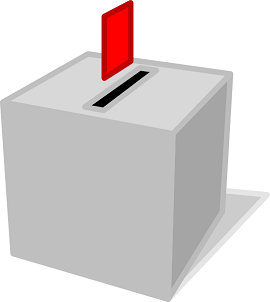Labor received 51.1% of the two-party preferred vote to the LNP’s 48.9%, according to Antony Green. This represents a swing to Labor of 14.0% since 2012.
That margin was greater than Anna Bligh achieved in 2009 and should have resulted in a comfortable win. However much of Labor’s vote is locked up in safe seats. Labor has 15 seats on more than 10%, compared to the LNP’s 10. Labor has two on over 20% to the LNP’s none.
At the other end of the spectrum, the LNP has four on a margin of less than 1% compared to Labor’s one. The LNP has 12 seats on less than 3% to Labor’s seven.
Labor won in Brisbane and the regions, especially the north. The swing was greatest in outer Brisbane (17%), defined by the seats in the Moreton Bay, Redlands, Logan and Ipswich local government areas. Labor holds no seats on the Gold Coast or Sunshine Coast.
On preference flows, fewer votes were exhausted this time.
There were 71 electorates that finished as two-party preferred contest in both 2012 and 2015. In 2012 the distribution of all minor party preferences in these seats split 27.0% to Labor, 22.0% to LNP and 51.0% exhausted. In 2015 the same figures are 47.8% to Labor, 15.9% to the LNP and 36.3% exhausted. With 18.2% minor party and independent vote in these seats in 2015, changed preference flows have added 3-4% to the swing.
The union campaign to “put the LNP last” seems to have prevailed over the LNP’s injunction to “just vote one”.
Had preference flows in 2015 been at the same rate as in 2012, Labor would not have won Bundaberg, Ferny Grove or Maryborough, and would have struggled to win Mount Coot-tha.
Labor won the race for both Katter and PUP preferences.
Together Palmer United and Katter preferences split 38.7% to Labor, 20.6% to the LNP and 40.1% exhausted.
As for the Greens:
In 2015 Labor received around 20% stronger preference flows from the Greens. In 2012 the big first preference gap delivered a boost to the LNP through exhausted preferences, a factor less relevant in 2015. On a Green vote of 8-10% in most urban seats, the change in preferences delivered an extra 2-3% to the swing to Labor after preferences.
There has been a pathetic attempt to suggest that Labor has no mandate, because the LNP got more first preference votes. Green’s analysis rather gives the lie to that claim. The LNP are lucky they got as many seats as they did.
Finally, and not from Green, if you want to shorten Annastacia Palaszczuk’s first name, friends and family call her Stacia.


The Qld optional preference voting system is on the of fairest preference voting systems as long as people understands how it works. It is fair because it minimises unintended informal votes by bending over backwards to allow votes to count as long as it is clear what the voter intended. It is also fair in that it doesn’t force people to distinguish between minor parties and independents that they know little about.
The concern I have is the high percentage of minor party votes that exhausted. (36.3%) I accept that some of these exhausted votes reflected an understandable view that neither of the majors were worth voting for.
The real problem I had though was that I know some of the exhausted votes were the result of ignorance. A surprising number of educated, politically active people thought that the Qld system was the same as the senate system in the sense that “just vote 1” meant that your preferences would be distributed according to the wishes of the party you voted for.
Both major parties have used “just vote 1” when they think that they will benefit from the exhaustion of the votes for minor party. Going on Anthony’s data it is hardly surprising that the LNP was pushing this line this time around. They even went as far as unsuccessfully seeking an injunction to have ALP signs saying “fill in all the squares” taken down.